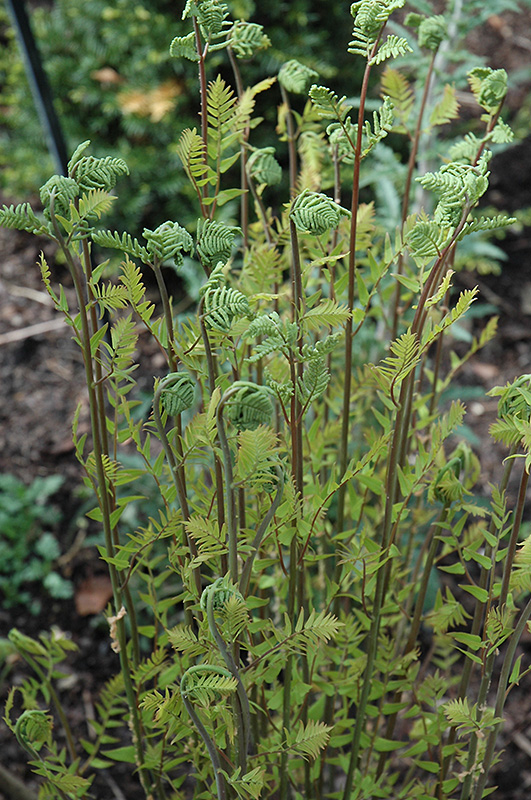Height: 3 feet
Spread: 24 inches
Sunlight:
![]()
![]()
Hardiness Zone: 3a
Description:
This graceful fern has lacy, arching fronds, fully grown by June, and soft yellow color in fall; foliage is distinctively hay-scented when crushed; a habitat for birds and bees; prefers dappled shade instead of dense shade
Ornamental Features
Hay-Scented Fern is primarily valued in the garden for its cascading habit of growth. Its tiny ferny leaves are green in color. As an added bonus, the foliage turns a gorgeous yellow in the fall.
Landscape Attributes
Hay-Scented Fern is an herbaceous evergreen perennial with a shapely form and gracefully arching foliage. It brings an extremely fine and delicate texture to the garden composition and should be used to full effect.
This is a relatively low maintenance plant, and is best cleaned up in early spring before it resumes active growth for the season. It has no significant negative characteristics.
Hay-Scented Fern is recommended for the following landscape applications;
- Mass Planting
- Border Edging
- General Garden Use
- Groundcover
- Naturalizing And Woodland Gardens
Planting & Growing
Hay-Scented Fern will grow to be about 3 feet tall at maturity, with a spread of 24 inches. Its foliage tends to remain dense right to the ground, not requiring facer plants in front. It grows at a medium rate, and under ideal conditions can be expected to live for approximately 10 years. As an evegreen perennial, this plant will typically keep its form and foliage year-round. As this plant tends to go dormant in summer, it is best interplanted with late-season bloomers to hide the dying foliage.
This plant does best in partial shade to shade. It does best in average to evenly moist conditions, but will not tolerate standing water. It is not particular as to soil type, but has a definite preference for acidic soils. It is somewhat tolerant of urban pollution. Consider applying a thick mulch around the root zone over the growing season to conserve soil moisture. This species is native to parts of North America. It can be propagated by division.

